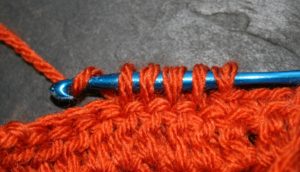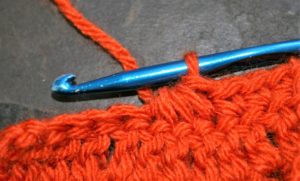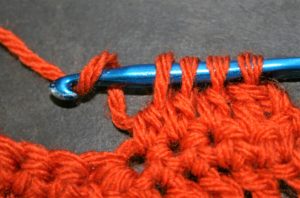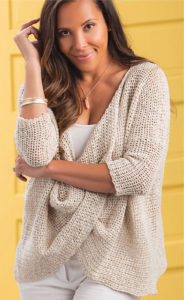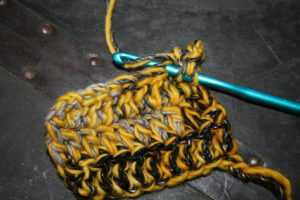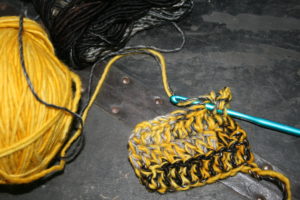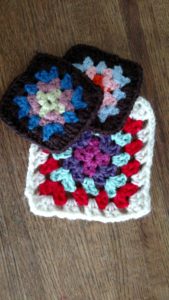 I have been traveling quite a bit as of late, and have had the welcoming surprise of seeing crochet so well accepted.
I have been traveling quite a bit as of late, and have had the welcoming surprise of seeing crochet so well accepted.
The first weekend in April I was invited to offer instruction for the Crochet Guild of America at the DFW Fiber Fest, and teach the CGOA Master’s Day course. DFW Fiber Fest is in its 13th year, and includes all fiber skills; knitting, crochet, weaving, spinning, etc. It feels very much like a family, and there is so much diversity of skills and craft that it really engages the imaginations.
 After teaching my course I had a table in the vendor hall to inform people of the opportunities of CGOA, and found my table inundated with people so astonished to find an organization solely focused on crochet, and loved the fact that crochet was at this show.
After teaching my course I had a table in the vendor hall to inform people of the opportunities of CGOA, and found my table inundated with people so astonished to find an organization solely focused on crochet, and loved the fact that crochet was at this show.
There were crochet samples in the vendor booths, and the lobby of the convention center was even yarn bombed with crochet. It is always nice to see.
The following week I was in attendance at a blogging conference, SNAP, in Salt Lake City. A crochet class was even offered here, teaching bloggers and crafters the basics to amigurumi (crochet toys). Of the 350 in attendance, 13 specifically focused their writing on crochet. This is among food bloggers, craft bloggers, family bloggers, travel bloggers, makeup bloggers, and such, and there were 13 bloggers that loved crochet. I must admit that I was even surprised by the substantial number of crocheters represented.
During these travel events, I was reminded what an ice breaker crochet is. On my flights I met other crocheters, everyone was happy to talk about their latest projects and the direction this craft was taking them on; making gifts for loved ones, charity projects, projects for sale, the first time attempts, the multiple successes. Crochet brings out the stories that we can all relate to.
I often find that crocheters feel alone in their craft, they might believe that they love a small craft hobby, but the numbers don’t support that. We may crochet alone, but there are many of us, and more places are recognizing this and inviting crochet. Check out your nearest fiber related event, if they are not specifically highlighting crochet, attend anyway and bring your hook, you might be surprised to find how many people open up and relate their crochet stories just by your asking.

